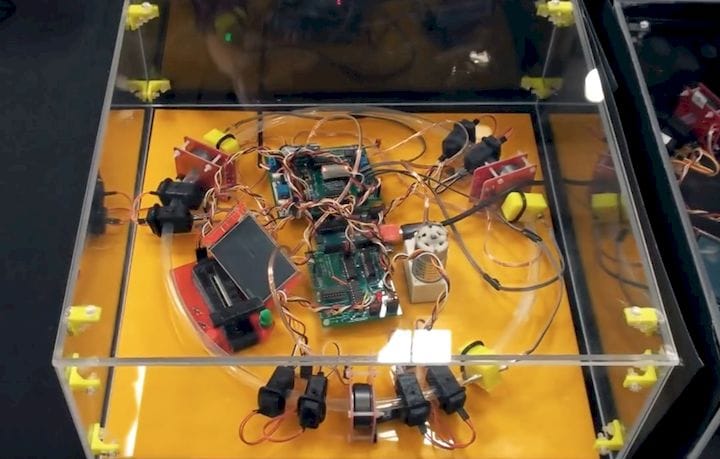![A 3D printed particle accelerator [Source: Kickstarter]](https://fabbaloo.com/wp-content/uploads/2020/05/image-asset_img_5eb0927f41e02.jpg)
This week’s selection is the 3D Printed Particle Accelerator by 17-year-old student Josephine Collins (and her father, Daniel).
To be clear, this is not a huge, dangerous scientific installation that requires PhD staff to operate. No, it is in fact an “advanced DIY science project”, where STEM students can investigate the mysteries of particle acceleration first hand.
How on Earth would someone decide to make a tabletop particle accelerator? Apparently the conversation between Jo and her father went like this:
Jo: “Dad, I’ve got a school project to make a model of something scientific… can you help please…”
Daniel: “Sure, what do you have in mind ?”
Jo: (thinking)… “You know the Large Hadron Collider ?”
Daniel: (in the spirit of encouraging kids to shoot for the stars) “Sure, let’s do it !!”
Jo: “Oh… by the way, we get extra marks if it works !”
Does it actually accelerate particles? It does, if you consider a particle to be a small metal ball in a transparent tube. The device is designed to operate much like a real particle accelerator, even though it’s moving a ball instead of protons.
Jo’s Personal Particle Accelerator – advanced STEM kit
null
The tube is surrounded by a series of computer activated electromagnets that accelerate the ball through the tube. They “fire” in an appropriate sequence to speed up the ball. This is precisely how a real particle accelerator works, except that you can see the particle with your own eyes.
That leads to the inevitable comparison with a real particle accelerator, like the Large Hadron Collider in Europe. The Collinses have created a handy comparison chart:
![Comparing the desktop personal particle accelerator to the Large Hadron Collider [Source: Kickstarter]](https://fabbaloo.com/wp-content/uploads/2020/05/image-asset_img_5eb0927f9aa66.jpg)
While there’s plenty of electronics involved, including an Arduino board, many of the parts for the personal particle accelerator are 3D printed, and the entire “PPA” project is open sourced. This makes it easy to modify for other uses and experiments.
They’ve decided to market a PPA kit on Kickstarter, with a series of purchasable options ranging from AUS$240 (US$163) to AUS$699 (US$475). The variations involve whether the 3D printed parts, Arduino and other components are included. This makes it flexible for those who might already have some of the components on hand, or a 3D printer to produce parts.
This kit could be quite convenient for educators who wish to build something like this in their own classrooms. Who knows, this might inspire the next Einstein?
Via Sydney Morning Herald and Kickstarter (Hat tip to Jacob)












This week’s selection is a 3D printed Coronavirus!